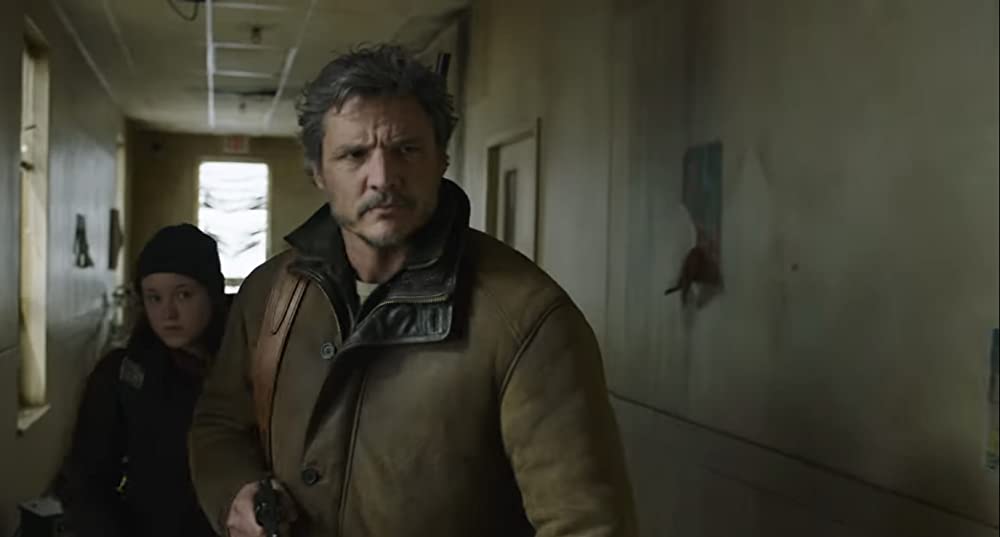Per Matt
What if our planet’s climate changed, warming up just enough for mutating fungi and evolutionary monsters to take over the human race? No prevention. No cures. No hope for humanity. It’s a dire scenario for the new HBO series, The Last of Us, but if you substitute fungi with the undead, then you’ve pretty much got the premise for another great genre television series, The Walking Dead.
After watching the first four episodes of the HBO show, I started wondering what could have been for the Robert Kirkman franchise. And then it dawned upon me: The Last of Us is what The Walking Dead should have been.
At the end of the world, martial law is declared with the fall of society. Humanity’s last stand is highly dependent upon fighting off a mutated fungus, along with a fast-growing insurrection. The fate of the world lies with smuggler Joel Miller (played by Pedro Pascal), as he escorts 14-year-old Ellie (Bella Ramsey) across the country in hopes of creating a cure from her blood.
What begins as an unlikely road-trip team up quickly becomes a Post-Apocalyptic coming-of-age story that redefines the characters’ lives. This is kind of what happens in the TWD’s first couple of seasons — except it was slower. Much slower.
Almost nothing happens within the first two seasons of TWD (with the exception of a whole lotta dialogue and exposition), which is a byproduct of the show having three different showrunners within its first four seasons (and four, total, through its 11-year run). In comparison, The Last of Us hits the ground running with a whole lot of action and the third episode was so emotional, it may have easily won its first Emmy for the series (for writing and/or direction).
But the comparisons don’t end there.
In both series, there’s no stopping the spread; no stopping the undead. No prevention of deaths and destruction to the human race, along with the planet. The herds of walkers and hordes of Infected have something like a hive mind and melee weapons are definitely in demand. Both pilots offer great worldbuilding stories, seemingly heading into opposite directions, but they could have been more similar.
The Walking Dead: A Telltale Games Series debuted on April 24, 2012 and became an instant hit. The video game won numerous awards, including being named Game of the Year by many outlets. Clementine was considered the best-written character in the series, if not the entire TWD collection, and many fans expected her appearance in the AMC series — sadly, it never happened, as torture porn and too many ancillary characters watered down its overall storyline.
The Last of Us was originally released in June of 2013, also quickly becoming a bestseller for PlayStation 3. Its small-screen adaptation may have taken a little longer than expected (due to COVID-19), and now that TWD mothership has (thankfully) concluded, TLoU carries the genre torch with its young female star, while improving upon the former’s concept. Each successive episode improves upon the last, forcing the viewer to believe in these characters, while cheering them on.
Its format even shares flashbacks to a variety of countries through different years, making this show feel more like World War Z than TWD at times. Overall, the concept feels fresh, and the series looks to have a bright future. And it airs on a premium network, where censors are more relaxed.
It truly is too bad The Walking Dead showrunners didn’t consider some of these story elements and format choices. TWD could have even featured a strong, young female character first, but didn’t. While it was successful in its own right for 11 seasons, it could have become so much more. And since TLoU explores a similar-but-different post-Apocalyptic world, my belief in the series’ comparison does not waver: The Last of Us is what The Walking Dead should have been.
Only time will tell if I’m wrong.

